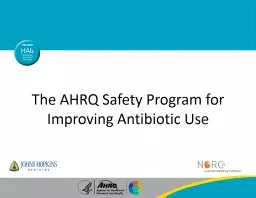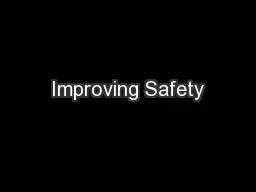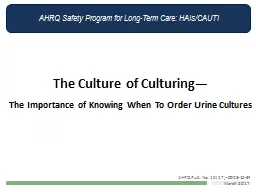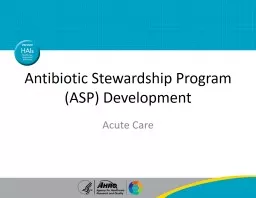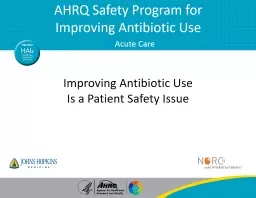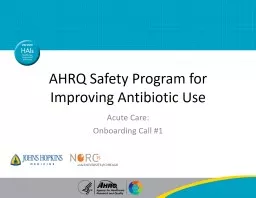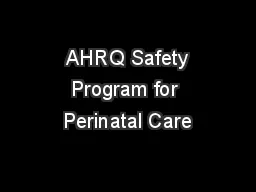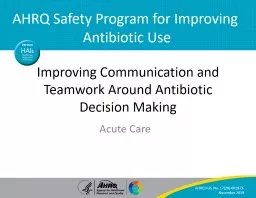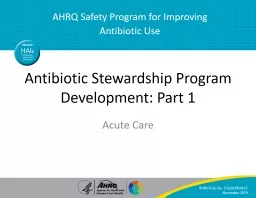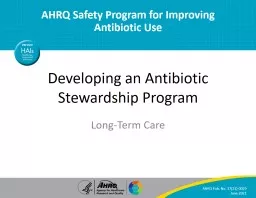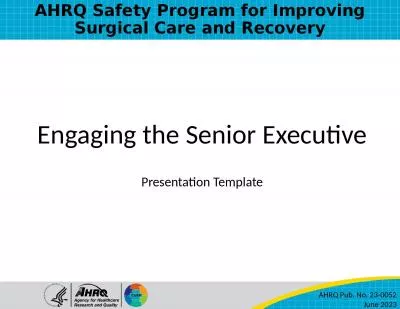PPT-The AHRQ Safety Program for Improving Antibiotic Use
Author : mitsue-stanley | Published Date : 2019-02-09
Presenter Pranita Tamma Pranita Tamma MD MHS Assistant Professor of Pediatrics Director of Pediatric Antimicrobial Stewardship Johns Hopkins Hospital Program email
Presentation Embed Code
Download Presentation
Download Presentation The PPT/PDF document "The AHRQ Safety Program for Improving An..." is the property of its rightful owner. Permission is granted to download and print the materials on this website for personal, non-commercial use only, and to display it on your personal computer provided you do not modify the materials and that you retain all copyright notices contained in the materials. By downloading content from our website, you accept the terms of this agreement.
The AHRQ Safety Program for Improving Antibiotic Use: Transcript
Download Rules Of Document
"The AHRQ Safety Program for Improving Antibiotic Use"The content belongs to its owner. You may download and print it for personal use, without modification, and keep all copyright notices. By downloading, you agree to these terms.
Related Documents

